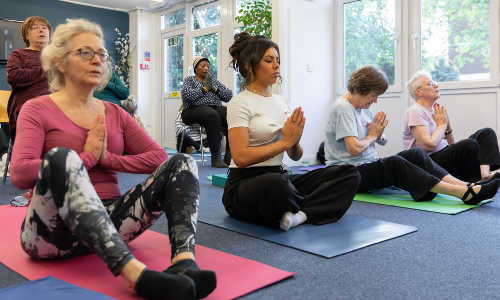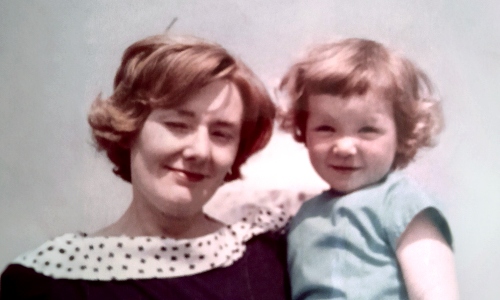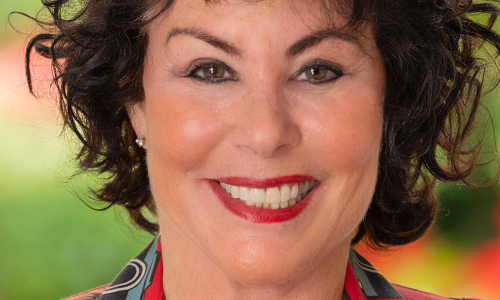With the gradual easing of lockdown measures on the horizon, it’s important that older people have the confidence to spend more time outside. That’s where Lavina Mehta MBE comes in. She’s spent lockdown getting older people stretching, squatting and boxing their way to fitness.
Lavina wasn’t always interested in physical activity. For several years she worked in corporate roles, but after the birth of her third child, her “wellness journey” began with joining a gym. Courses in fitness instruction and personal training followed, to better understand the benefits of what she was doing, before taking on clients. Many were up to the age of 70, which familiarised Lavina with the physical challenges experienced by older people, such as osteoporosis and osteoarthritis. Meanwhile, she’s also led a campaign to get UK Asians physically fit, mindful of the alarming statistics around diabetes and heart disease in the Asian community.
With the arrival of the pandemic, Lavina developed structured programmes that embrace video conferencing software and social media, while recruiting her mother-in-law, who happens to live next door, to help demonstrate the exercises. She’s also developed the concept of ‘exercise snacking’ as a way to provide easier, manageable small steps to helping older people get active, for the benefit of their mental health as much as their physical health. “My slogan has been: exercise for sanity, not vanity.”
How did you go about the process of tailoring what you do for older people?
Lavina: “I have what I call a ‘feel good prescription’ for all of my workouts, whatever the age of the people participating. I try to cover 4 aspects: 1. Mobility – the warm up, encouraging older people to use things like resistance bands; 2. Cardio – as some will have been isolating or shielding, I had to think about how to do cardio exercises safely from home; 3. Strength training – lifting tins/plastic bottles to build muscle mass; and 4. Stretching.”
“I spent many hours trying to figure out how to adapt exercises I might traditionally do while standing to a chair-based version. For the strength training part, for example, what would be a traditional squat has been adapted to a ‘sit and stand’ – starting off on a chair and using it to support as you try to stand up, even if it’s only hovering a few inches, then sitting back down. There is a degree of progression with these exercises too. With the ‘sit and stand’, you can progress to fully standing up, unsupported, if that’s possible for you.”
What have been the positive outcomes from your classes?
“One of the biggest positives from this period is older people embracing digital technology for a variety of purposes. My mum didn’t even have a mobile phone before, but now is confidently joining me for classes online. Other important factors have been creating a virtual community to combat loneliness, and breaking down the barriers to where exercise can be done, emphasising that you can do it anywhere, whether it’s in your bedroom, kitchen, or lounge.”
“The messages I receive from the people who do my classes suggest that they find them beneficial. I notice people smiling during the classes, too, which is a clear sign they’re enjoying what they’re doing. After one of the recent classes, I interviewed my mother-in-law, who lives on her own, to see how she was feeling. She used to be very introverted and would never dream of being on camera, but now has so much confidence and strength and says she feels able to do far more than before. Plus her knee pain has disappeared!”
Which teaching techniques have proved particularly effective?
“We do boxing in the sessions, either seated or standing depending on what people are able to do. As we’re doing it, I’ll say that ‘we’re fighting our way through the pandemic’, which really galvanises people. You can see that they’re really punching out their anxieties and stresses, letting them go and pushing them away. These kinds of techniques make things memorable for the next time. What could be more inspiring than the sight of a 97-year-old trying their hand at boxing?”
For those who haven’t been exercising much, what can they be doing to prepare themselves for being out and about more?
“I know a lot of older people, including my own parents, who haven’t left the house for months, even to go for a walk, because they’re so scared. I’ve had to encourage them to use the stairs to get their steps in, or get their feet moving while they’re seated watching the TV, which are both helpful measures for people who don’t have gardens.”
“If people haven’t done any exercise during lockdown but want to get moving to be fitter for spending more time outdoors, it’s important to start off small. There’s been a study that suggests for those over the age of 65, even a minute of exercise is beneficial to your health, so it’s better to do something than nothing. Sitting for too long isn’t great for your health, so try to sit less and move more. Try to find something active that you enjoy – it doesn’t matter if it’s not for a full hour.”
“The Government guidelines for physical activity for older adults recommend two strength training sessions and 150 minutes of moderate aerobic activity a week, which works out to 30 minutes a day, which might be daunting for someone in their seventies. The idea, then, is to break it up into short bouts, like 10 minutes just walking around your garden, then gradually increasing the time, to build confidence. Before or after a meal is a good idea. After a meal is particularly good, as it helps control your blood sugar.”
You use what you describe as 'exercise snacking'. Can you explain the concept?
“Exercise snacking is the healthiest type of snacking around. It’s taking short bouts/bitesize amounts of movement throughout the day, that means even if it’s 5 or 10 minutes. It’s a treat for your body and your mind. I have lots of different snacks, whether it’s a ‘walk snack’ or ‘stair snack’ to get your cardio in, or something for increasing strength.”





